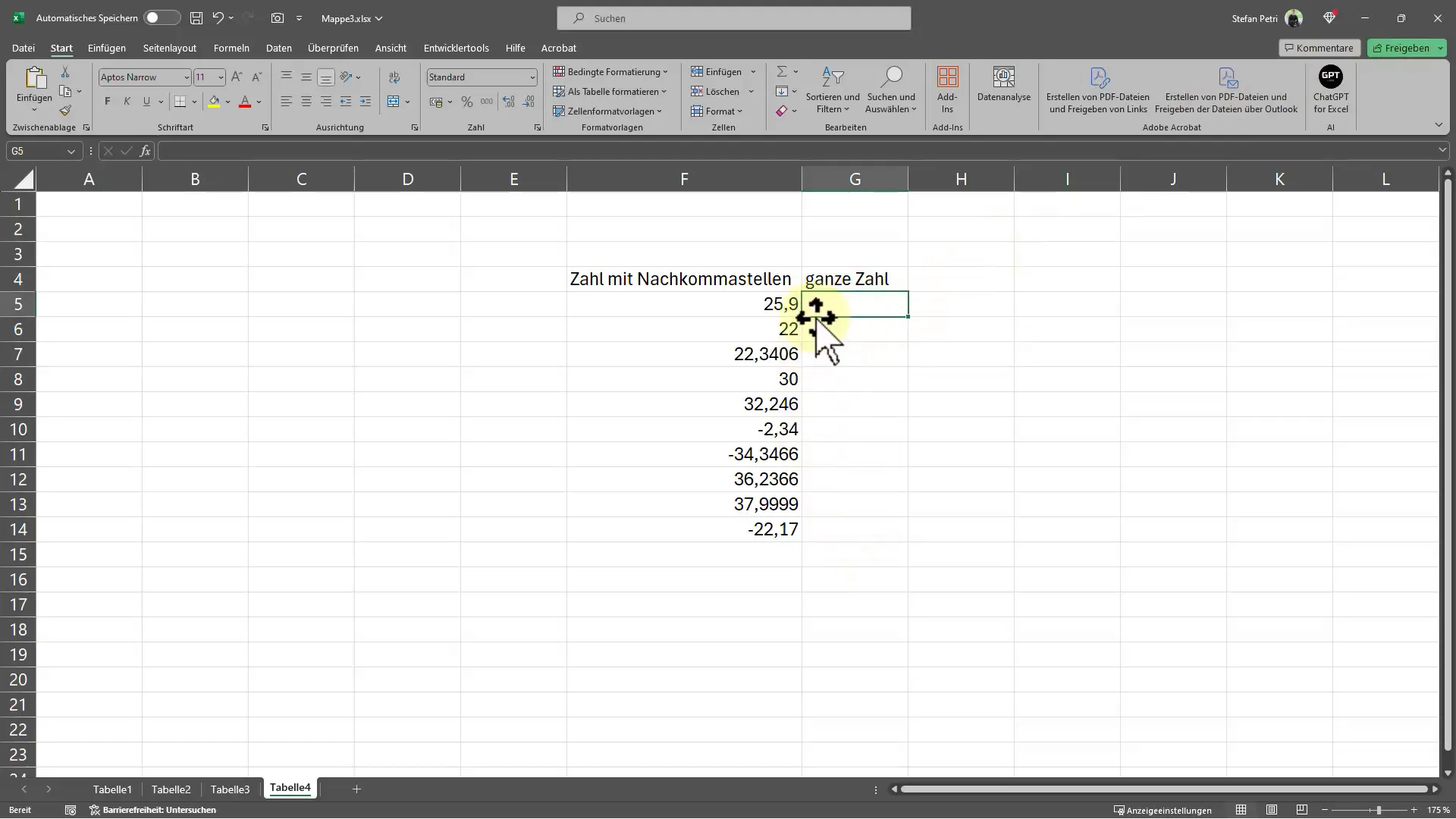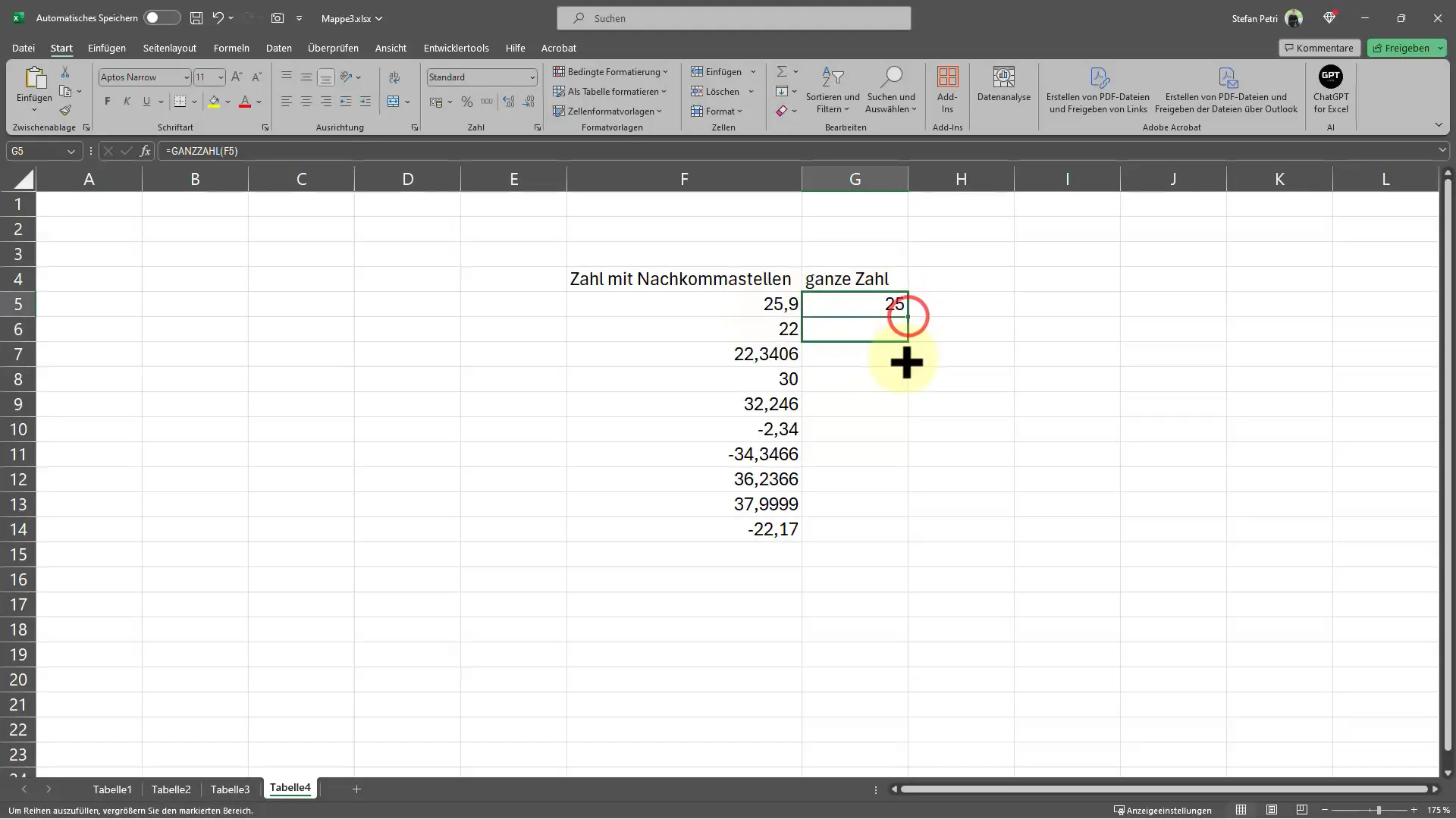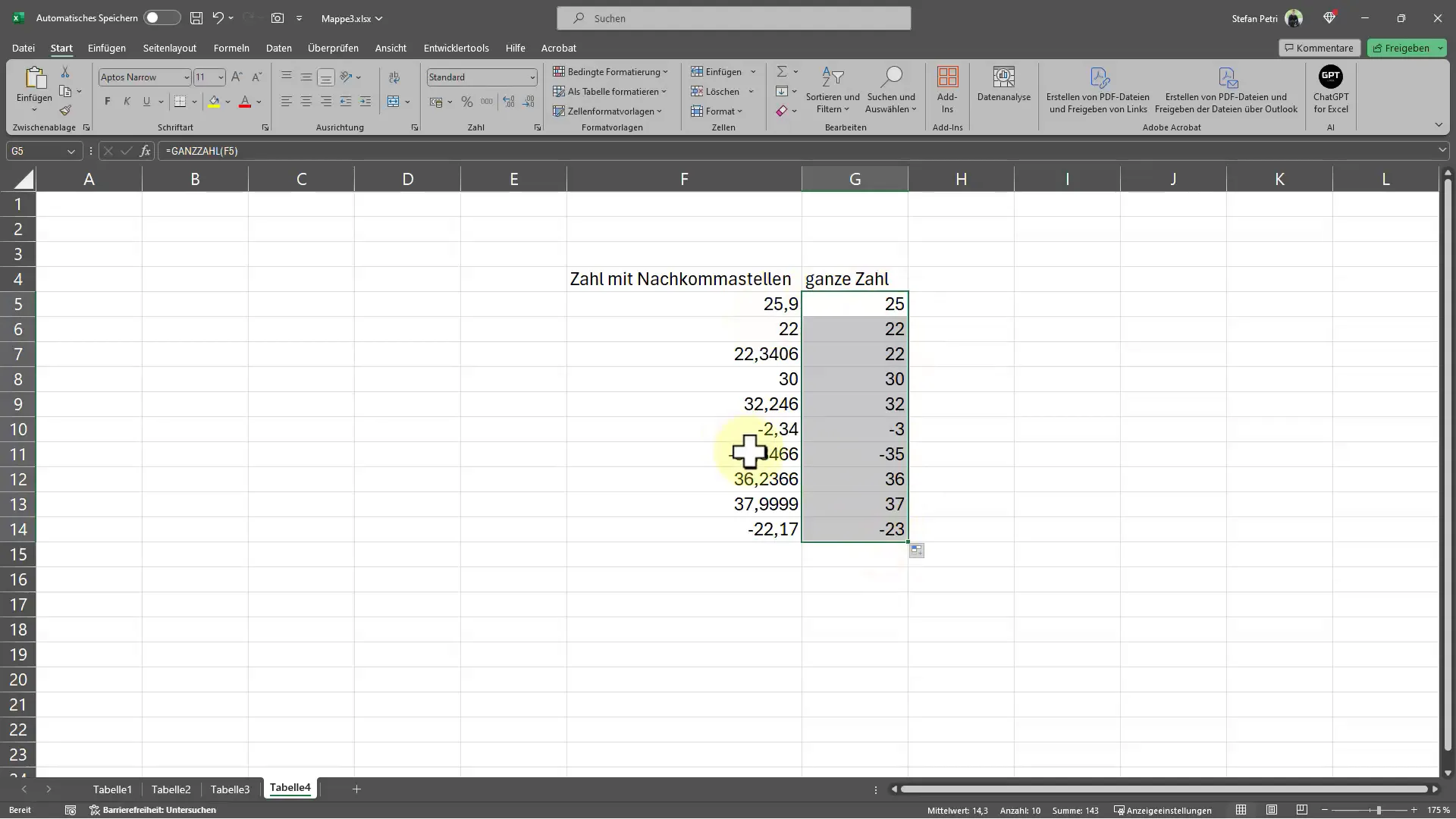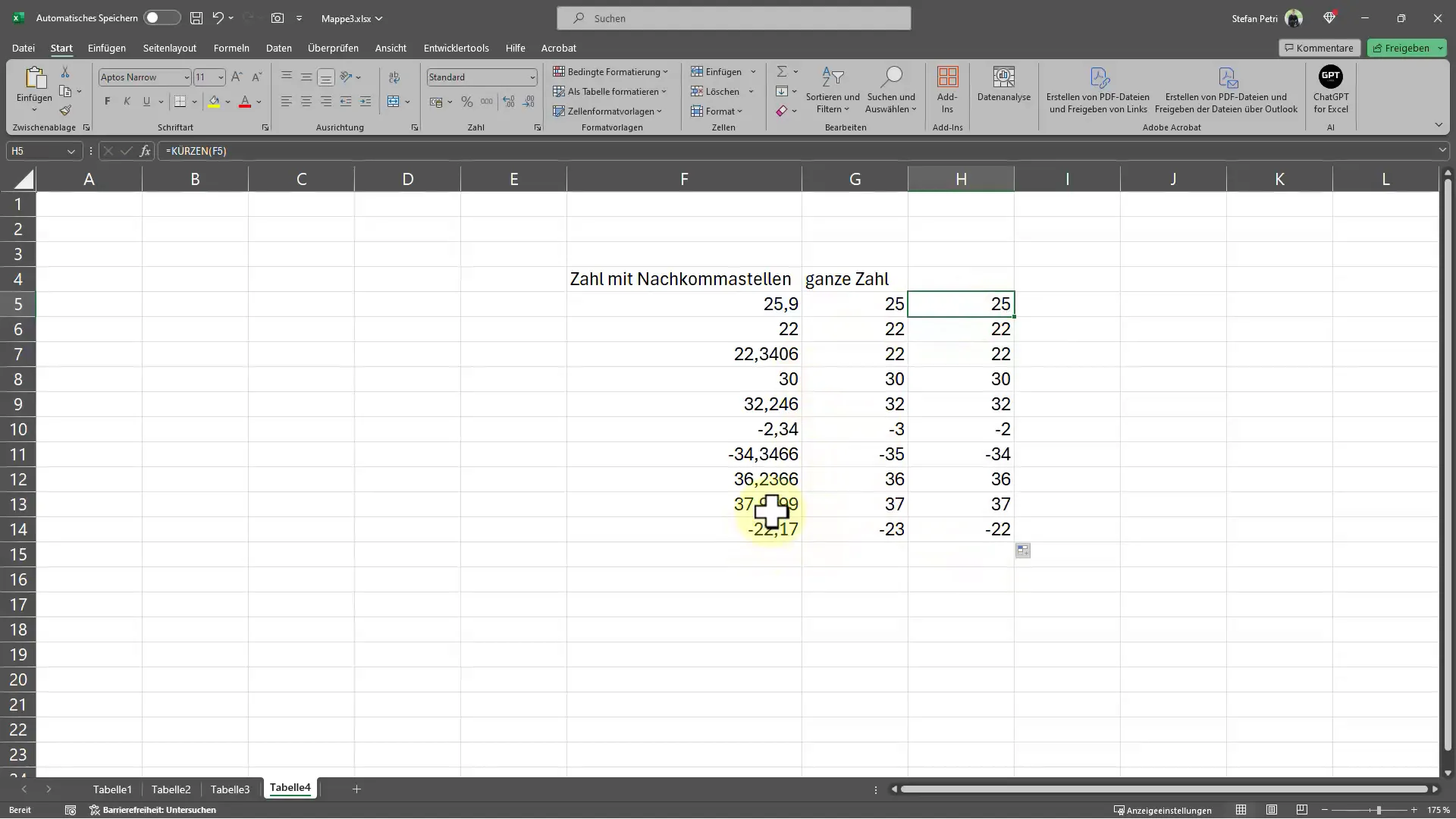In this tutorial, I want to show you how you can display whole numbers without decimal places in Excel. This can be particularly useful when you want to present data that does not require decimal places, or when you want to perform precise calculations where rounding is not desired. There are two main functions that you can use for this: the "INT" function and the "TRUNC" function. Both functions have their own applicability, and it is important to know the correct usage in order to achieve the desired results.
Key Takeaways
- The "INT" function always rounds down to the nearest whole number, regardless of whether the original value is positive or negative.
- The "TRUNC" function simply removes the decimal places without rounding, making it ideal for specific applications, especially when working with negative numbers.
Using the "INT" Function
To use the "INT" function, you need to first select the cell where the result should appear. In descriptive form, it will look like this: "=INT(A1)", where "A1" is the cell containing the number you want to convert. After entering this input, press Enter to see the result. The subsequent number will now be displayed as a whole number, with all decimal places removed.

Another interesting observation is the behavior of the "INT" function with negative numbers. It will always return the nearest smaller whole number, meaning it does not round up but always rounds down.

For example, if the number input is -2.5, Excel will display -3. This is an important point to consider when working with negative values.

Using the "TRUNC" Function
The second function, "TRUNC", is also very easy to use and has a different approach. Again, select a cell and enter the function "=TRUNC(A1)", where "A1" represents the cell you want to convert. Then repeat the process by pressing the Enter key. The difference from the "INT" function is already evident here, as "TRUNC" simply removes the unnecessary decimal places without rounding in any direction.
A practical example could be having the value 2.9 in cell A1. When you use the "TRUNC" function, it will return the value 2. This is useful when you want to ensure that the numbers are only displayed as whole numbers without unexpected rounding.
Conclusion and Application of the Functions
In conclusion, the "INT" function can be very useful when working with positive numbers and wanting to ensure that all values are properly rounded. For negative numbers, the "TRUNC" function is recommended, as it provides exactly what you need without generating unexpected rounding. Thus, you have two powerful tools in your Excel toolkit to handle numbers that should not contain decimal places.

Summary - Excel Tips: Displaying Whole Numbers Without Decimal Places In this tutorial, you have learned how to display whole numbers without decimal places in Excel by using either the "INT" or "TRUNC" functions. You should pay attention to which function is best suited for which context, especially when negative values are involved.
Frequently Asked Questions
How do I use the "INT" function in Excel?You enter the command "=INT(A1)", where A1 represents the cell containing the number.
What happens when I use "INT" with negative numbers?"INT" always rounds down to the nearest whole number.
When should I use the "TRUNC" function?Use "TRUNC" when you simply want to remove the decimal places without rounding.
Are there differences between "INT" and "TRUNC"?Yes, "INT" rounds down, while "TRUNC" only cuts off the decimal places.
Can I use these functions for large amounts of data?Yes, both functions can be applied to large amounts of data and can be easily copied and dragged to other cells.


